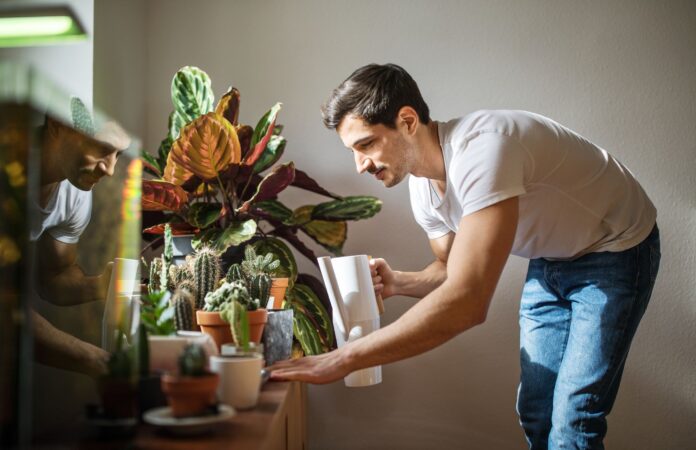
Dry air in your home isn’t just uncomfortable; it can lead to health issues like nosebleeds, cracked lips, and even breathing difficulties. According to the Mayo Clinic, proper humidity levels are crucial for preventing dry sinuses and skin, as well as easing symptoms of colds and allergies. But there’s a catch: too much humidity can lead to microbial growth and worsen allergies. So, how do you strike the perfect balance? Dr. Clayton T. Cowl from the Mayo Clinic emphasizes the importance of maintaining ideal humidity levels for both health and comfort, especially during dry winter months or in arid climates.
Natural Ways to Humidify Your Home
Here are seven easy, cost-effective ways to add moisture to your indoor air without a humidifier:
1. Utilize Your Tub and Shower
After a bath or shower, leave the water to cool in the tub, or open the bathroom door to let steam escape. This simple act leverages evaporation to add moisture to the air.
2. Bring in More Houseplants
Plants aren’t just beautiful décor; they naturally humidify air through transpiration. Water moves from roots to leaves, where it’s released as vapor.
3. Turn Heating Sources into Humidifiers
Place bowls of water near radiators or vents. As the water warms, it evaporates, increasing the room’s humidity. Remember to regularly change the water to maintain cleanliness.
4. Decorate With Water Features
Vases with water or indoor fountains not only beautify your space but also boost humidity through evaporation.
5. Air-Dry Your Laundry Indoors
Hanging wet laundry inside can significantly increase moisture levels. Plus, it saves on energy costs!
6. Boil Water on the Stove
Simply boiling water on your stove can release enough steam to humidify a room. Just keep an eye on it to avoid any hazards.
7. Use Your Dishwasher’s Steam
After running the dishwasher, turn off the heat dry setting and open the door to let the steam out. This not only adds moisture but also saves energy.
The Ideal Humidity Level for Health and Comfort
Maintaining indoor humidity between 40% and 60% is ideal for both health and comfort. This range helps prevent respiratory issues, skin dryness, and static electricity. It also minimizes the growth of harmful microbes, dust mites, and allergens. A hygrometer can be used to monitor these levels in your home.
Conclusion
By adopting these simple, natural methods, you can maintain a healthy and comfortable humidity level in your home. Try these tips and see the difference in your living environment. And if you found this article helpful, don’t forget to share it, explore more of our articles, or subscribe to our newsletter for more tips on healthy living!










